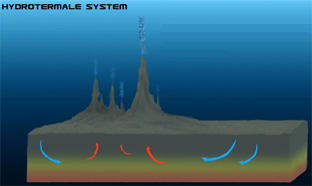About Water-Rock-Microbe Interactions
While originally believed to be strictly physical and chemical in nature, researchers are now coming to understand that water-rock interactions are strongly influenced by microbial activity and metabolic processes.

Main content
The processes were originally believed to be strictly physical and chemical in nature, however, researchers are now coming to understand that water-rock interactions are strongly influenced by microbial activity and metabolic processes.
The Rock-Water-Microbe Interactions research group is a diverse group that include researchers in geology, geochemistry, geobiology, and chemistry.Alteration of the oceanic crust by the circulating hydrothermal fluids is one of the major processes responsible for element exchange between the lithosphere and the ocean. Thus, knowledge of the mechanisms and factors that control the alteration rate and chemistry is fundamental to understanding and modelling of marine chemistry and global element cycling.
The alteration process was originally considered from strictly physical and chemical points of view. However, the recent recognition of indigenous microorganisms in subseafloor rocks and fluids, and follow-on investigations showing strong biologically-produced chemical signatures in some venting systems (e.g. highly 13C-isotope depleted methane) implies that the water-rock interactions are strongly influenced by microbial activity and metabolic processes.
Recent studies indicate that endolithic microbes influence alteration and element mobility of the oceanic crust in several ways. For example pit marks in fresh rock that are the same shape and size as attached microbes suggest bio-catalysed dissolution with increased element mobility and alteration rates compared to abiotic processes.
On the other hand, cell encrustations with different chemical composition than the surrounding altered rock indicate bio-mineralization and microbial immobilization of elements that otherwise would be transported away by the circulating fluid. Determination of how and to what extent the geobiological processes within the deep biosphere influence alteration of the ocean crust will significantly increase our understanding of the ocean-crust geochemical exchange.
Determination of the magnitude of the deep biosphere, and its role in carbon cycling and storage in the crust, are furthermore important for the understanding and modeling of greenhouse gases and their environmental effects. Additionally, identification of textural and chemical traces of present day microbial activity in oceanic rocks and establishment of consistent biosignatures will be valuable for detection of both recent and ancient microbial life on Earth and other planets.
